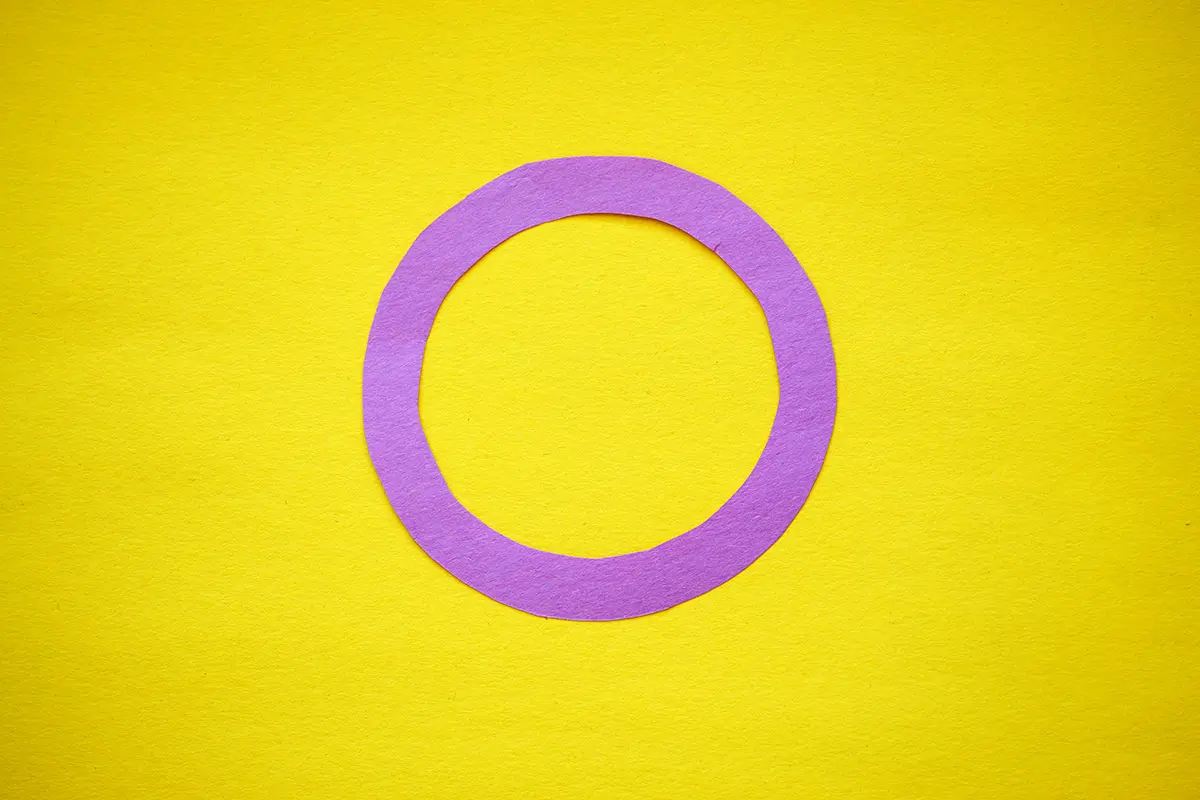Hey, y’all, I am super excited to write and raise awareness about this month’s topic on intersex people and the traumas they face. I am writing in honor of intersex awareness day, which falls on the 26th of October every year. This group of people deserves more visibility and recognition for the discrimination and traumas they can face at birth for simply existing. Yes, you read that correctly; they can experience abuse and mistreatment as innocent, sweet babies from day one and on.
Let’s back up for a moment and make sure we all have a general understanding of what Intersex means. Intersex is a term used to describe individuals whose biological sex characteristics do not fit typical definitions of male or female. These can involve variations in chromosomes, gonads, hormones, or genitalia. Intersex traits can be present at birth or become more apparent later in life. It’s important to note that being intersex is a naturally occurring variation in humans and not a medical condition. 1-2% of the population is intersex; this is as common as every redhead that you have ever seen.
Say it again for those in the back!
I repeat, 1-2 in 100 people are intersex. So why is it that most of us have never heard about this group of people and their traumas until now? One word stigma, I’ll get to that later. For now, let’s have a quick science lesson taught by yours truly.
Biology 101
If you are anything like me (I failed basic biology twice in college), you may need a refresher on the differences between sex and gender. Sex refers to biological differences between males and females based on physical attributes such as chromosomes, hormone levels, and reproductive/sexual anatomy. For example, females typically have two X chromosomes (XX), and males typically have one X and Y chromosome (XY). Again, the primary categories of sex are male and female, but there are also intersex individuals who have a combination of male and female biological traits or differences in sex development.
Gender refers to the roles, behaviors, activities, expectations, and identities that societies and cultures consider appropriate for men, women, and other gender identities. It is a social construct, not inherently tied to biological sex. Gender identity can be male, female, a combination of both, neither, or something else entirely, such as nonbinary, genderqueer, or transgender. Gender is more fluid than sex. People can identify with a gender assigned at birth (also known as cis-gendered), and some may identify as a gender that does not fit within the traditional male/female binary.
Where we begin to run into trouble
The gender binary is a classification system that divides gender into two distinct categories: man and woman. This framework assumes that there are only two genders, each associated with specific roles, behaviors, identities, and attributes. This harms not only cis-gendered men and women (which is a different topic for a different day) but anyone who does not fit neatly into these boxes. It opens gender-diverse people to many different discriminations.
Human Rights Violations
Because intersex bodies are viewed as different from the gender binary, they are subject to multiple human rights violations-especially when it comes to seeking healthcare. One of the most concerning is unnecessary, non-consensual medical interventions. Circumcision aside (again, another topic for a different day), genital surgery is happening on minors today.
Since the 1950s, standard treatment has involved determining a sex for these intersex infants and performing surgery to make the infant’s genitals fit more “normally” with the gender binary. Post-surgical complications include scarring, chronic pain, loss of sensation, and urinary and sexual dysfunction. Parents of intersex children are lied to about their child’s “condition.” The risks and long term-impacts that the surgeries can have are not fully disclosed, meaning consent is not fully informed.
Yikes is absolutely right!
And on a more horrifying level, parents and physicians fail to divulge the truth about their medical histories to intersex children. Leaving many intersex children to uncover the truth about their identity later in life after having undergone multiple surgeries that have serious long-term complications due to our society’s discomfort with anything that is outside of the “normal” binary.
Rather than normalizing diversity, providing the public with accurate medical information, and including intersex people in research that accounts for all diversity, we are condemning this vulnerable group of people to isolation, secrecy, invisibility, identity erasure, and shame, which can have lasting impacts on their mental health. Intersex people are at an increased risk of developing PTSD, depression, and anxiety.
The Path to Healing
Addressing these sources of trauma involves promoting greater awareness, acceptance, and respect for intersex variations, advocating for informed consent and bodily autonomy, and providing appropriate medical, psychological, and social support. The malpractice must end. Those who continue to perpetuate harmful stereotypes and perform these damaging surgeries must be held accountable.
Treatment modalities such as EMDR, somatic experiencing, sex therapy, and pelvic floor therapy are most beneficial in treating the traumas intersex people have faced.
If you are an intersex person who is struggling with coming to terms with your identity and the medical abuse that you have faced, you need to know that you did not need those experiences to become the amazing person that you have always been. What has happened to you and how you have been treated is wrong. There is nothing wrong with you; it is our culture that needs fixing. Diversity is normal and should be celebrated for all the uniqueness and exquisite beauty it brings to our planet. Sending acceptance, love, and healing your way!
Sources:
Karakazis, K. (2008). Fixing intersex: Doctors, hormones, and the making of sex. Duke University Press.
Pagonis, P. (2020). Nobody needs to know. Topple Books/Little A.
Digitale, E. (2008). Stanford author explores struggles of intersex individuals, their families, and doctors. https://med.stanford.edu/news/all-news/2008/11/stanford-author-explores-struggles-of-intersex-individuals-their-families-and-doctors.html
Beherns, K. (2020). A principled ethical approach to intersex pediatric surgeries. https://www.ncbi.nlm.nih.gov/pmc/articles/PMC7597036/#:~:text=It%20was%20observed%2020%20years,that%20atypical%20anatomy%20will%20lead
Medina, C. (2021). Key issues facing people with intersex traits. https://www.americanprogress.org/article/key-issues-facing-people-intersex-traits/#:~:text=Because%20people%20with%20intersex%20traits,Figure%203
Other Resources:
Phx Pride
https://phoenixpride.org/phoenix-pride-lgbt-center/
Every body
https://www.imdb.com/title/tt27074938







